It’s spring time! The sun is out, ‘clouts’ are being cast left right and centre*, and everyone is looking a little bit happier. What better time then, to talk about umbrellas? After all, the aforementioned sun is still fighting those fluffy limelight-stealing clouds for our attentions and the ‘threat’ of rain is a spring time obsession in the UK, so it seems an opportune moment to point out the frequency with which umbrellas make an appearance in art and design.
This charming watercolour drawing from our collections simply titled ‘March’, by Randolph Caldecott, pretty much sums up an average day in any of our rather wind-swept towns and cities across the country.
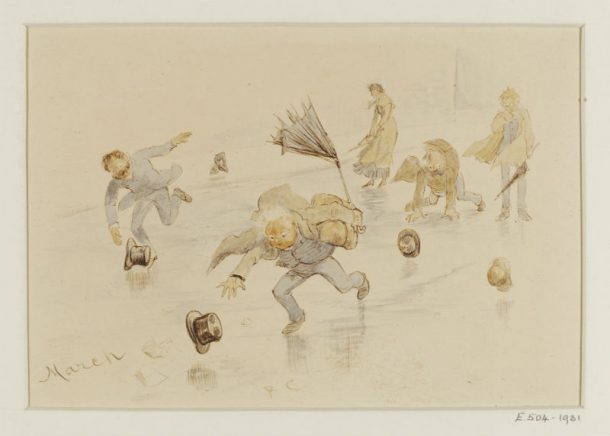
Drawn circa 1865 – 1886, a time when everyone still wore a hat to go out and about, it’s easy to see why this convention wilted away. The unfortunate lady and gentlemen in the picture will be lucky to ever see their hats again as the wind is busy sending them hurtling across the pavement. The main feature of the image, however, is the all too familiar sight of an umbrella turned inside out, its owner struggling to multi-task staying upright, hat-catching and keeping hold of the now useless object at the same time. He may as well not bother, as its inevitable destination is either the dustbin or the gutter by the looks of things. The man on the right hand side of the picture has sensibly rolled his up and appears curiously unruffled by the weather conditions, choosing instead to merely stare at his hat rolling away. You can view ‘March’ and more of Caldecott’s wonderful drawings and illustrations in the Prints & Drawings Study Room (currently by appointment).
Indeed, the rolled-up umbrella seems to make as many appearances in art as does the perhaps more visually arresting open version. In this caricature sketch of the nineteenth-century artist Samuel Palmer, George Richmond has chosen to include the rolled-up umbrella, notably held upside down, as an indication of Palmer’s character.
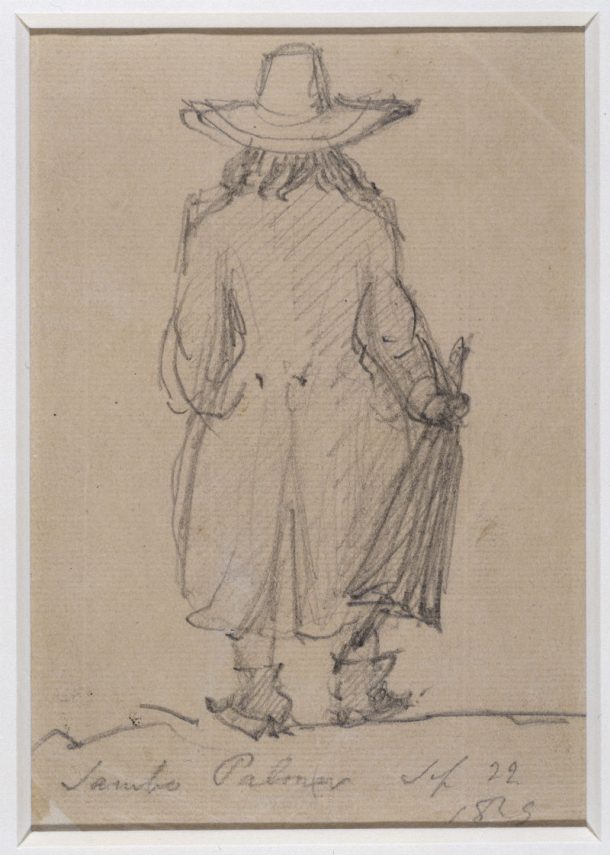
Likewise the artist responsible for this hand-coloured aquatint, ‘A spanking dog day – & real melter in the country’ has chosen to illustrate the unreliable nature of the British weather with a rolled-up umbrella flung to the ground along with shoes and knapsack. This unfortunate woman has fallen prey to the common mistake of being over prepared and now has to interrupt her journey in order to cool down by resting on a milestone. The only thing worse than not having an umbrella when you need one is having to carry one around when you don’t, and chances are the only thing saving this one from being tossed into the hedge behind her is the rather attractive mauve colour of its fabric.
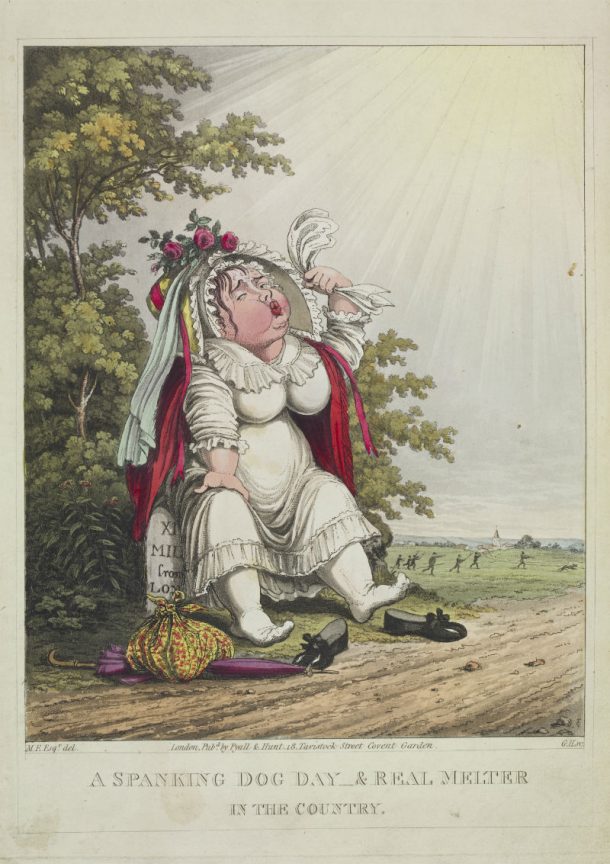
A rolled-up umbrella being used as a weapon is also the unlikely subject of this fashion plate from 1924.
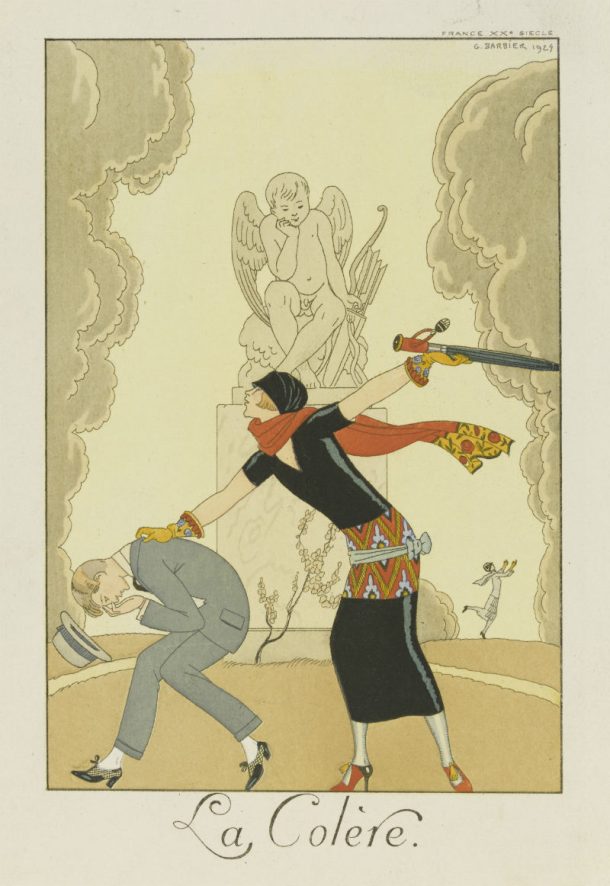
The ubiquitous nature of the umbrella in British life is in evidence in the street and portrait photography present in the V&A collections. In this image from the series ‘On a Good Day’ by Al Vandenberg, which is currently on display in the exhibition ‘Staying Power: Photographs of Black British Experience 1950s-1990s’, a young woman is seen in a light spring or summer dress holding an umbrella that looks like it might have been recently in use.
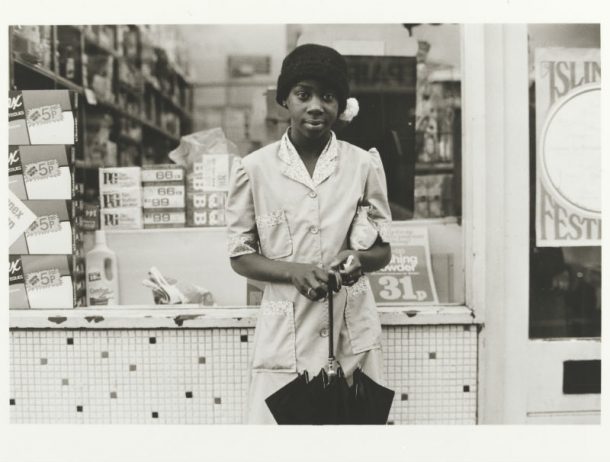
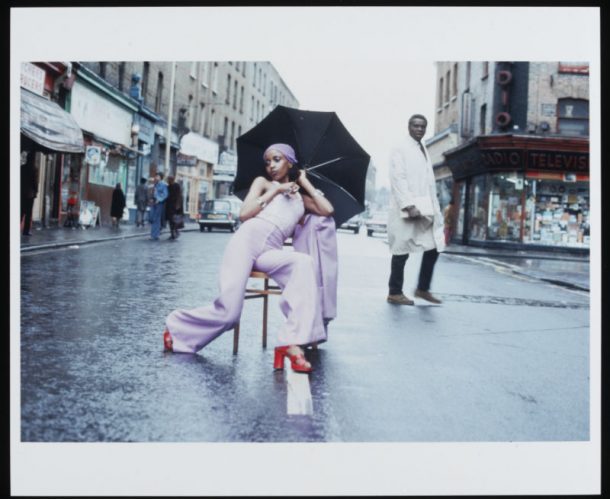
More than simply an eccentricity or a fashionable accessory, the umbrella as a symbol of British style and personality became something that designers such as those working for the advertising industry could rely on to convey exactly the message they wanted to put across. Here is a fine example from 1952 for the Financial Times newspaper. There is no doubt who the walking newspaper holding a briefcase and an umbrella is, he is someone familiar and in some ways his ‘faceless’ nature is a risky advertising strategy, probably saved by the tagline ‘men who mean business’.
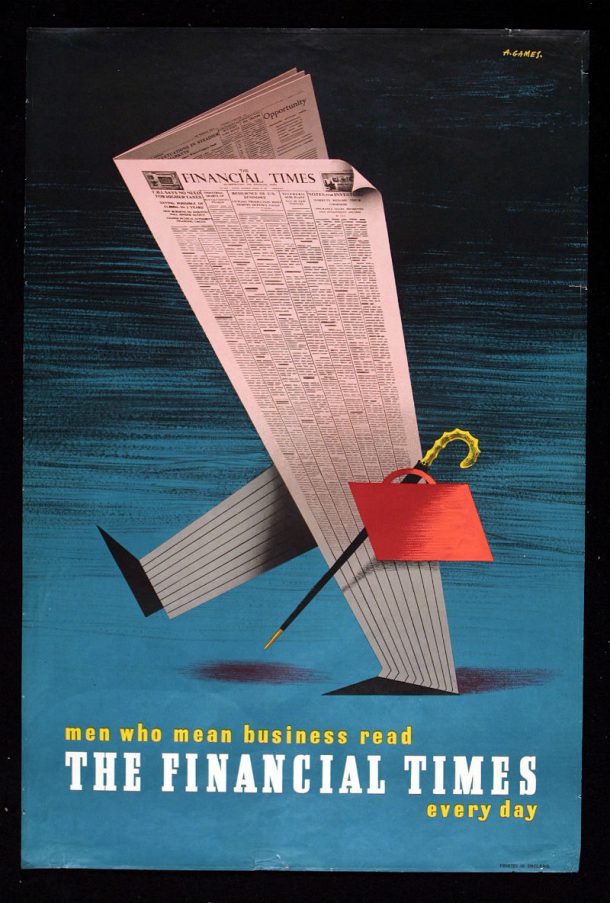
The umbrella appears as a motif across all art forms, from theatre set design to ceramics, as you will see if you use Search the Collections to look for more examples. Here is one of my personal favourites from the Theatre and Performance collection, a playbill for a performance by the Scottish Victorian magician John Henry Anderson, known as the ‘Great Wizard of the North’ and ‘Professor Anderson’. In his day Anderson was a huge attraction. He was very keen on unusual methods of promotion and he even had his own butter moulds made to advertise his shows. Featuring his ‘Unlucky Umbrella’ act, this playbill certainly illustrates the versatility of the humble umbrella and the delight that artists take in depicting them.
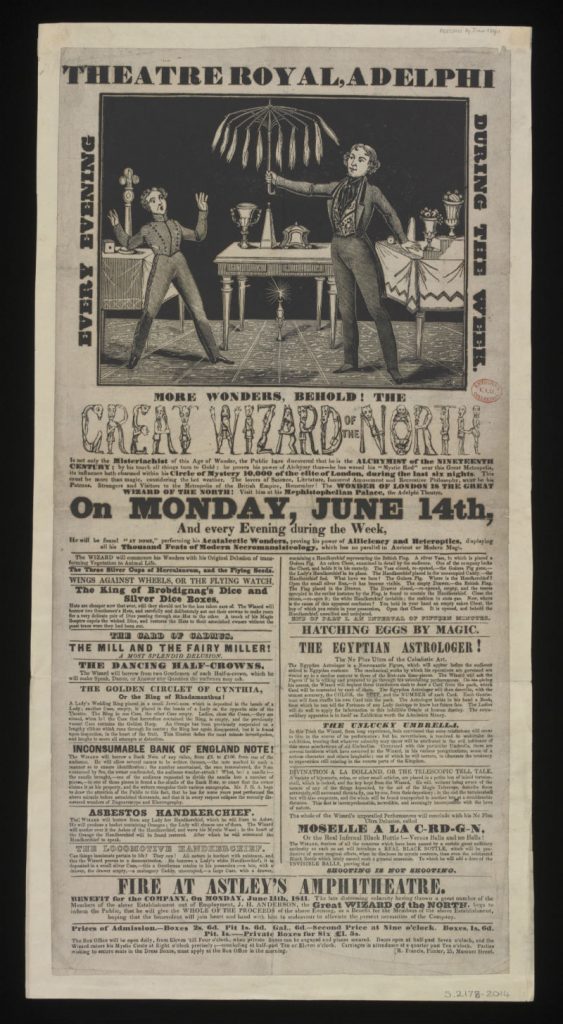
*‘Ne’er cast a clout till May is out’ is an old English saying (with Scottish and Welsh variations) generally accepted to mean don’t cast off your winter clothes until the end of May.
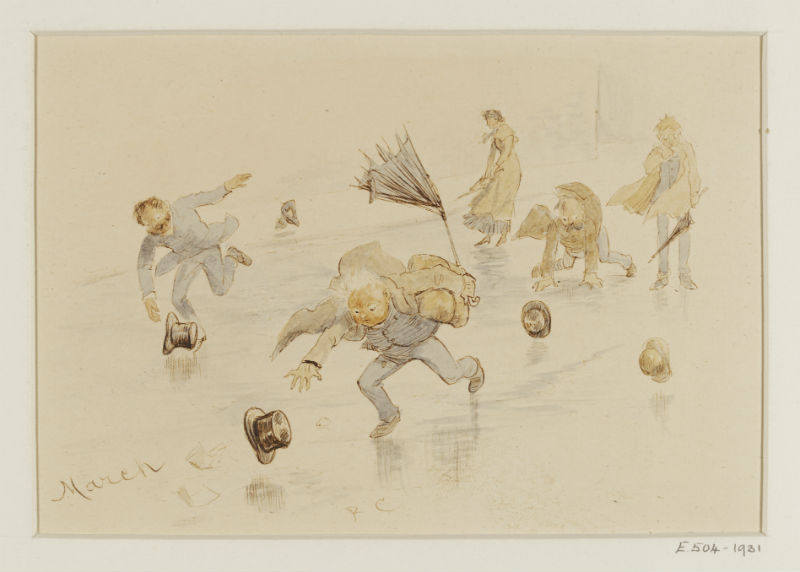
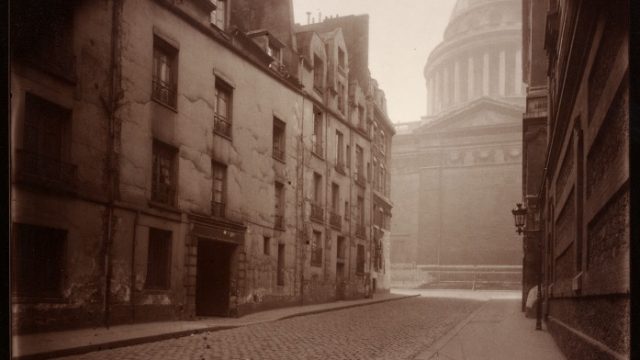
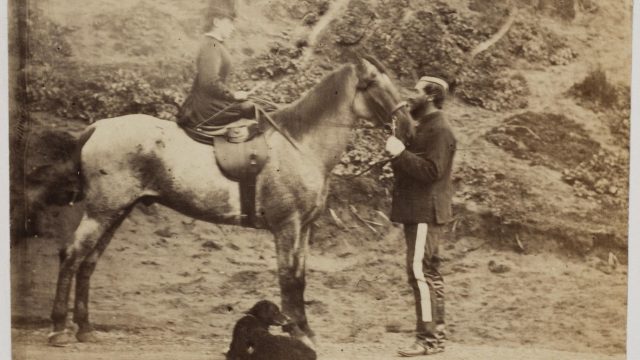
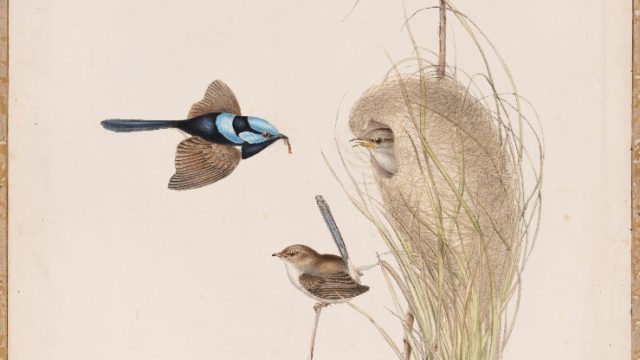
I love these paintings.
Denise
https://cubbypot.com/collections/mens-watches/products/mens-army-waterproof-quartz-sport-watch